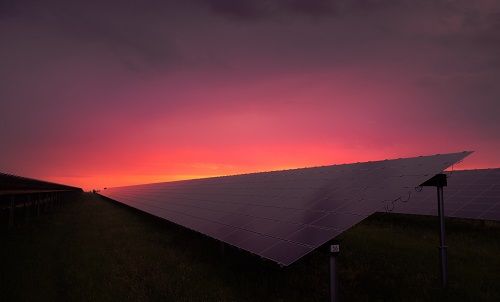Agriculture or energy production, food or green electricity - they don't have to be mutually exclusive. "Agri-photovoltaics finally brings agriculture and solar energy together", says Markus W. Voigt, CEO of the aream Group. "And all sides benefit: A double harvest can be harvested on the same area. A good reason for us to focus on the first agrivoltaic projects."
The German government has also recognized how important the expansion of photovoltaics is. In order to achieve the expansion targets by 2030, the solar package was therefore recently passed in the Bundestag. One focus is on providing additional land for solar parks through dual cultivation: agrivoltaics (agri-PV) allows land to be used for agriculture and electricity generation at the same time. "Agri-PV thus increases land efficiency and enables the expansion of solar energy production. At the same time, agricultural land and species-rich biotopes are preserved", explains Voigt.
Agri-PV also promises a win-win situation. "If the system design is designed and optimized accordingly, the interests of electricity producers, farmers and landowners can be reconciled", says Voigt. For example, while the row spacing of PV systems should be rather small from a PV perspective, ideally nine to 13 meters, farmers prefer larger row spacing in order to use the area more efficiently. "The art of development is to take the interests of all stakeholders into account appropriately", says Voigt.
Agri-PV is also cheaper than small solar roof systems and offers additional benefits for agriculture. For example, PV systems can provide shade or protect crops from heavy rainfall and farmers can diversify their sources of income through agri-PV. And finally, the dual use of land can increase public acceptance of photovoltaic systems: "Some municipalities, especially in eastern Germany, already have a large number of normal systems and only approve new projects in combination with agricultural use", says Voigt. The same applies if, for example, the quality of the soil is too good to be used solely for solar power production.
The interests and challenges are as varied as the farms themselves. "Every project is an individual case," says Voigt. "There is no real standardization here, everything is possible - from sheep farming to apple orchards, grain and potato cultivation to changing crop rotations over decades." While there have hardly been any large-scale projects realized in Europe apart from greenhouses and even corporations such as RWE or Engie have only built pilot plants so far, aream sees great potential here. "We are already working on the first agri-PV projects and plan to implement them within the next two years", says Voigt.
PRESSEKONTAKT:
Leandra Kiebach
T: +49 (0)211 30 20 60 4-2
E: lk@aream.de
